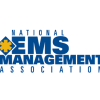It was a tragic call to a large funeral gathering: The adult son of the man being mourned had gone down during the eulogy. The ambulance service I worked for had responded to the father’s cardiac arrest a week earlier and now to the son’s. Both resuscitations were unsuccessful, and yet the family was effusive with its gratitude for our efforts. There is something special about CPR, even when it does not save a life.
As we mentioned in the July issue, two electrical engineers and a physician published an article in JAMA 50 years ago making an extraordinary claim: “Anyone, anywhere, can now initiate cardiac resuscitative procedures. All that is needed are two hands.” Cardiopulmonary resuscitation was the big name given to the simple two-handed procedure designed to circulate oxygenated blood until defibrillation. But over the past 50 years, CPR has done much more than circulate blood—it has done a work of mythic proportions.
CPR arrived as modern medicine was climbing to new heights and new understandings. As surgical procedures, medications and diagnostics attacked morbidity and lengthened life, death itself changed. It became a medically explained event with new definitions. “Clinical death” no longer meant the end—it was a transitional gap that could be bridged with a medically justified lifesaving procedure.
As CPR was picked up and promoted by the American Heart Association and the American Red Cross, it took off like wildfire and has yet to stop. Millions upon millions of people around the world have learned CPR, making it one of the most widely taught and universally accepted educational programs of any kind in the history of humanity. In our society, CPR has become the one medical procedure so universally accepted and expected that signed paperwork is needed not to have it performed on you.
Early on, CPR helped to sell EMS. With concepts such as the chain of survival and calling for help, it became a powerful way to market prehospital medical care and even careers in EMS. In the ’70s, every good ambulance service had an active community CPR training program, and you could not become an EMT without becoming a CPR instructor. As CPR moved into the schools, children and teens were made into lifelong believers in prevention, early calling for help and the ability of laypeople to make a difference.
CPR continues to do an important work in helping people contemplate and prepare for unexpected death. To talk about pulselessness and push on the chest of a lifeless mannequin are all important preparations for life’s unavoidable temporality. In the actual event of an arrest, the performance of CPR takes some of the suddenness out of sudden death. Sociologist Stefan Timmermans, author of the book Sudden Death and the Myth of CPR, explains that CPR “creates a temporal reprieve so that the bereaved can come to terms with the difficult process of dying. The actions of rescuers and paramedics provide a sense of order when death looms.” The resuscitation effort itself provides an emotional distance from the devastation of sudden death and often evokes a spontaneous community effort with strangers performing an intimate procedure on a stranger.
We’ve found a certain comfort in CPR. It helps to ensure that everything possible was done for the victim, which is why EMS continues to receive expressions of gratitude for resuscitative efforts that are not successful. We want to know that we have not only done something in the moment of death—we want to know that we have done everything possible.
.
| The Citizen CPR Foundation is celebrating 50 years of CPR with a special “50 for 50” Golden Anniversary Survivor Summit at the Emergency Cardiovascular Care Update conference in San Diego, Dec. 7–11, 2010. Visit eccu2010.com for information. |












